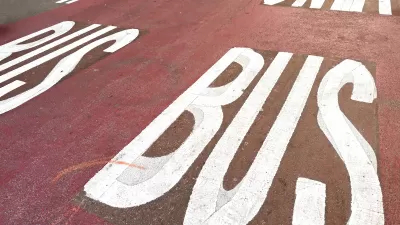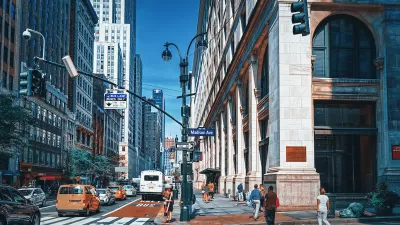New York City had a 35 percent increase in commuter cycling last year. Much of the increase was attributed to New York City’s Department of Transportation's experimenting with innovative bicycle facilities based on European models.
"The expansion allowed the city to tie the existing network together. Previously, the 400 miles of bike lanes weren't linked, so the New York City's Department of Transportation (NYCDOT) focused on making connections, thereby integrating the network. In the process, the NYCDOT was able to design 200 miles of streets for cyclists, drivers, buses and pedestrians.
To deal with unique situations, the NYCDOT borrowed designs from other cities in the U.S. and around the world.
In New York City, on-street bike paths, green coloured bike lanes that make paths more visible to motorists, and wider parking lanes were established to make cycling more enjoyable and safer for commuters.
The safety of the new bike lanes is attracting a lot of new cyclists while dramatically reducing the amount of sidewalk cycling.
Despite the astronomical growth in bicycle facilities, the number of people who commute by bicycle is still only 1 per cent, climbing as high as 4 per cent in some of the denser neighbourhoods of New York City."
FULL STORY: Cycling experts create innovative on-street bicycle network in New York City

Planetizen Federal Action Tracker
A weekly monitor of how Trump’s orders and actions are impacting planners and planning in America.

Chicago’s Ghost Rails
Just beneath the surface of the modern city lie the remnants of its expansive early 20th-century streetcar system.

San Antonio and Austin are Fusing Into one Massive Megaregion
The region spanning the two central Texas cities is growing fast, posing challenges for local infrastructure and water supplies.

Since Zion's Shuttles Went Electric “The Smog is Gone”
Visitors to Zion National Park can enjoy the canyon via the nation’s first fully electric park shuttle system.

Trump Distributing DOT Safety Funds at 1/10 Rate of Biden
Funds for Safe Streets and other transportation safety and equity programs are being held up by administrative reviews and conflicts with the Trump administration’s priorities.

German Cities Subsidize Taxis for Women Amid Wave of Violence
Free or low-cost taxi rides can help women navigate cities more safely, but critics say the programs don't address the root causes of violence against women.
Urban Design for Planners 1: Software Tools
This six-course series explores essential urban design concepts using open source software and equips planners with the tools they need to participate fully in the urban design process.
Planning for Universal Design
Learn the tools for implementing Universal Design in planning regulations.
planning NEXT
Appalachian Highlands Housing Partners
Mpact (founded as Rail~Volution)
City of Camden Redevelopment Agency
City of Astoria
City of Portland
City of Laramie





























